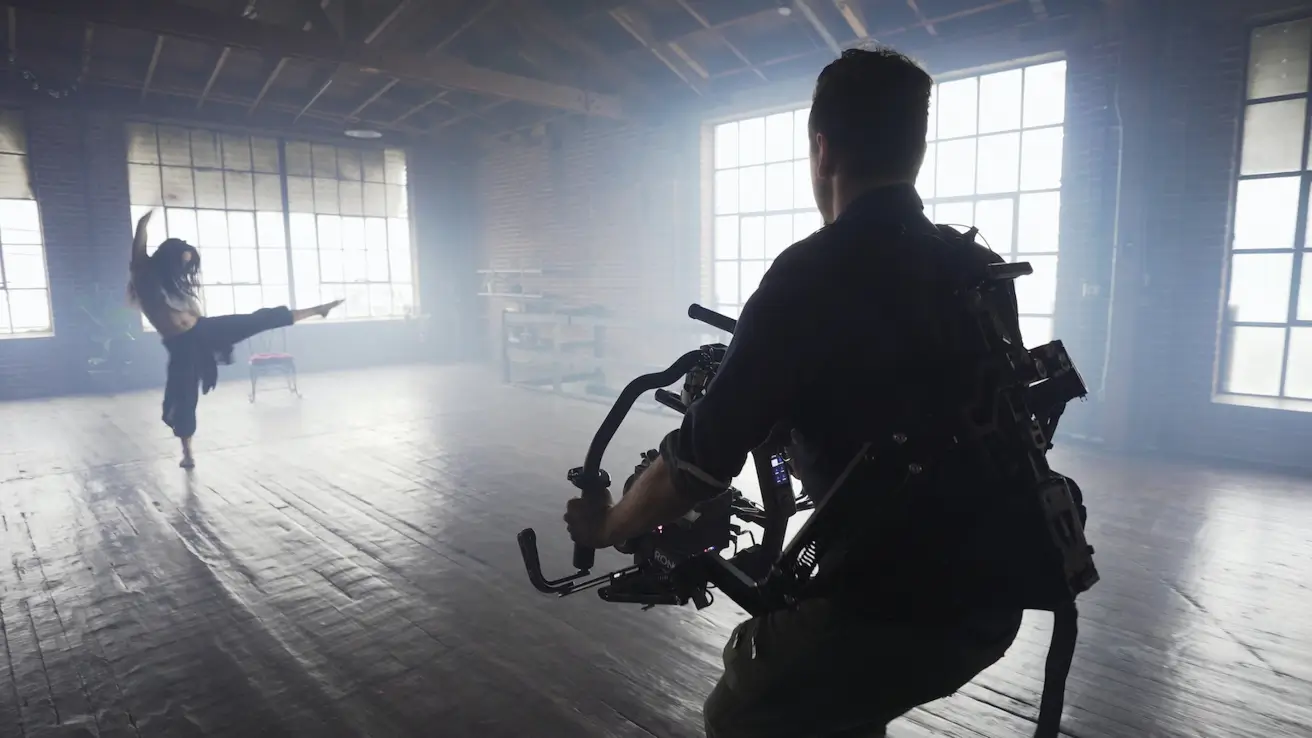
1. Smooth Shots: Adding Elegance and Stability
Smooth shots are often used to create a sense of calm, fluidity, or a professional look in scenes. They’re great for establishing shots, moving through large spaces, or following characters without distractions. Here are some common techniques to achieve smooth shots:
- Using a Gimbal or Stabilizer:
- Gimbals are essential tools for creating smooth, floating movements. They work by balancing the camera on multiple axes, counteracting shakes and sudden movements.
- Stabilizers like Steadicams are great for allowing fluid motion even during complex movements like walking or running.
- Tip: Ensure your gimbal or stabilizer is balanced before shooting to get the smoothest results.
- Dolly Shots:
- Dolly shots involve placing the camera on a track or wheeled platform to create a smooth, linear motion. They can add depth to a scene by moving toward or away from a subject.
- Dolly Zoom, also known as the “Vertigo effect,” involves zooming in while moving the camera backward (or vice versa), creating a surreal effect.
- Tip: Practice timing your dolly movements with actor performances to create seamless interactions between movement and action.
- Sliders:
- Sliders are smaller, portable versions of dollies that allow for smooth, short-range motion, often used for side-to-side or forward-backward movements.
- Great for adding a subtle sense of motion in interviews, product shots, or landscape scenes.
- Tip: Use a slider with adjustable resistance to control the speed and smoothness of your shot.
2. Handheld Shots: Adding Realism and Grit
Handheld shots are known for their raw, energetic feel, bringing a sense of immediacy and intimacy to scenes. They’re commonly used in documentaries, action sequences, or emotional moments where a sense of instability matches the scene’s intensity.
- Proper Stance and Posture:
- A stable stance can make a big difference in how steady your handheld shots turn out. Keep your elbows close to your body and spread your feet shoulder-width apart.
- Bend your knees slightly for better balance and to absorb small movements.
- Tip: Focus on keeping the camera movements slow and deliberate, especially during close-up shots, to maintain control.
- Using Camera Straps:
- Attaching a strap around your neck and pulling it tight can create tension that stabilizes the camera.
- This technique is especially helpful for DSLR or mirrorless cameras that don’t have built-in stabilization.
- Tip: Combine the strap method with a wide-angle lens to reduce the visibility of small shakes.
- In-Body Image Stabilization (IBIS) and Digital Stabilization:
- Many modern cameras come equipped with IBIS, which helps reduce shake in handheld shots.
- Use digital stabilization during post-production to further smooth out any jitters.
- Tip: Be careful with digital stabilization, as overuse can crop or distort footage. Aim to capture the steadiest shot possible in-camera.
3. Dynamic Camera Movements: Injecting Energy and Creativity
Dynamic camera movements are used to create excitement and draw viewers into the action. They’re great for high-energy scenes, action sequences, or even establishing shots with a dramatic flair.
- Using a Jib or Crane:
- Jibs and cranes allow for sweeping, vertical movements that can reveal a location or create a grand sense of scale.
- Great for transitioning from a low-angle close-up to a wide shot of a landscape or crowd.
- Tip: Ensure you have a balanced setup to avoid wobbles or uneven movements during vertical pans.
- Whip Pans:
- A whip pan is a fast movement that blurs the transition between two scenes, adding energy and a sense of urgency.
- Often used in action sequences or comedic transitions to create a sense of disorientation.
- Tip: Practice the speed and direction of your whip pans, ensuring that the camera lands precisely on the subject for a seamless effect.
- Tracking Shots:
- Tracking shots involve moving the camera alongside a moving subject, keeping pace with them while maintaining the same distance.
- These shots are ideal for following characters walking or running, creating a sense of connection between the audience and the character.
- Tip: Use a vehicle or a cart with stable wheels for longer tracking shots to avoid bumps and jerks.
- Drone Shots:
- Drones offer unparalleled freedom of movement, allowing for sweeping shots that can fly over landscapes, follow vehicles, or even track characters from above.
- They add a cinematic quality that was once only achievable with helicopters.
- Tip: Plan your drone path in advance and be mindful of obstacles, weather conditions, and regulations to ensure a safe and smooth flight.
Conclusion: Finding the Right Technique for the Story
Choosing the right camera movement depends on the story you want to tell. Smooth shots add elegance, handheld shots bring a sense of realism, and dynamic movements inject energy. By mastering these techniques, you’ll be able to create visually engaging scenes that elevate your storytelling.
So, the next time you’re behind the camera, try experimenting with different tools and techniques. With practice, you’ll discover new ways to bring your cinematic vision to life!